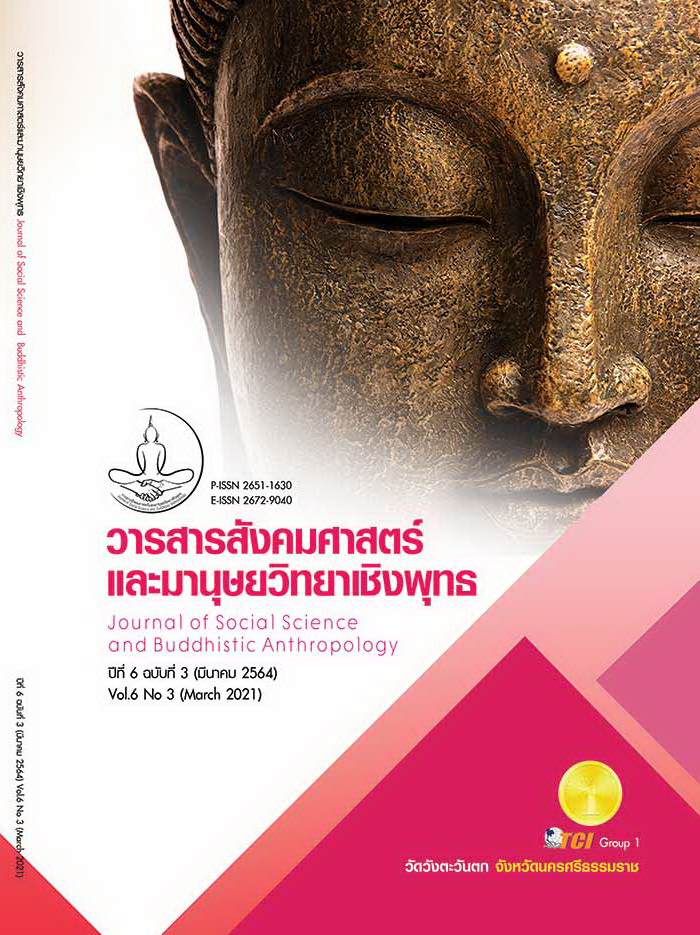DESIGN FOR MOBILE LEARNING RESOURCES FOR UNDERPRIVILEGED CHILDREN IN THREE SOUTHERN BORDER PROVINCES
Keywords:
Design, Mobile Learning Resources, Underprivileged Children, Sakai Tribe, Southern Border ProvincesAbstract
The objectives of this research article were to design mobile learning resources for underprivileged children in the three southern border provinces. It was a creative study of information from relevant partners including the caregiver of underprivileged children, library staff and parents in the three southern border provinces, as well as the designers. The research method is a combination of both qualitative research which uses group discussion and practice development. The research data was collected through in-depth interviews by using a questionnaire as a tool for data collection. The results of the research can be summarized as follows in designing mobile learning resources for underprivileged children in the three southern border provinces, three phases were established as follows: 1) Concept design by the “Sakai Tribe”. 2) Implementing by adopting technology that allowed people and homes, buildings that can save time, transform space, move as we want. Technology that represented the degree of expansion that can be achieved by mobility to reach a wider community 3) Summarizing from in-depth interviews, the target group liked the idea of “Sakai Tribe” which attracted children very well, including the use of colors that were comfortable on the eyes. The design by adopting a container was reasonable, easily to find, and truly cost effective. The satisfaction in design work is very good, which was the satisfaction of implementing design concepts from “Sakai people”. The design of the interior space was reasonable. The design of a mobile learning center was summarized based on the concept of the “Sakai Tribes” that is attractive to children as well. This also focused on worthwhile space utilization and responsiveness consistent with the behavior of the space users.
References
ประภาศ ปานเจี้ยง. (2546). ซาไก…วิถีชีวิตที่เลือกแล้ว. วารสารหาดใหญ่วิชาการ, 1(1),46-50.
พรทิพย์ สุวันทารัตน์. (2548). ห้องสมุดเคลื่อนที่. ใน เอกสารการสอนชุดวิชาการบริการและเผยแพร่สารสนเทศ. มหาวิทยาลัยสุโขทัยธรรมาธิราช.
ไพบูลย์ ดวงจันทร์. (2541). คำและประโยคในภาษาซาไก. วารสารมนุษยศาสตร์ปริทรรศน์, 20(2), 47-61.
มูลนิธิศูนย์พิทักษ์สิทธิเด็ก. (2559). คำนิยามผู้ด้อยโอกาส. เรียกใช้เมื่อ 25 ตุลาคม 2560 จาก https://www.thaichildrights.org/about/
สำนักข่าวอิศรา. (2560). ความรุนแรงไฟใต้ทำหญิงเป็นหม้าย 2,295 ราย เด็กกำพร้า 4,455. เรียกใช้เมื่อ 25 ตุลาคม 2560 จาก https://www. isranews.org/content-page/67-south-slide/3204-ความรุนแรงไฟใต้ทำหญิงเป็นหม้าย-2,295-ราย-เด็กกำพร้า-4,455-คน.html
สำนักงานส่งเสริมสังคมแห่งการเรียนรู้และคุณภาพเยาวชน (สสค.). (2554). สถานการณ์เด็ก เยาวชน และผู้ด้อยโอกาสทางสังคม. เรียกใช้เมื่อ 20 ตุลาคม 2560 จาก http://www.qlf.or.th/Mobile/Details?contentId=147
benews. (2015). Ideas Box ห้องสมุดไร้พรมแดน การเรียนรู้และความคิดสร้างสรรค์ เพื่อชีวิตใหม่อีกครั้งของผู้ลี้ภัย. เรียกใช้เมื่อ 15 เมษายน 2560 จาก https://www. benewsonline.com/home/2017/02/ideas-box/
Curbed. (2018). อาคารพับได้ อีกหนึ่งนวัตกรรมล้ำๆ. เรียกใช้เมื่อ 26 กุมภาพันธ์ 2561 จาก http://dsarun490.blogspot.com/2018/02/ten-fold-engineering-ten-fold.html
DEX Space. (2016). DESIGN THINKING คืออะไร. เรียกใช้เมื่อ 25 ตุลาคม 2560 จาก https://medium.com/base-the-business-playhouse/design-thinking-คืออะไร-overview-dc8c8e7547db
Prasertsuk, S. (2008). Modern architecture and the rise of the machine aesthetic: A look at the origin of modernist influences in western architecture and its evolution over 20th century. Bangkok: Thailand Creative & Design Center (TCDC).
ThaiPR.net. (2555). เหตุความไม่สงบ 3 จังหวัดชายแดนใต้ทำยอดเด็กกำพร้าพุ่ง. เรียกใช้เมื่อ 25 ตุลาคม 2560 จาก https://www.ryt9.com/s/prg/1434906








